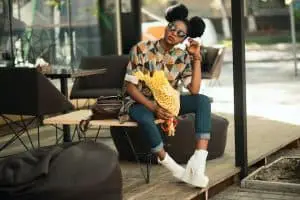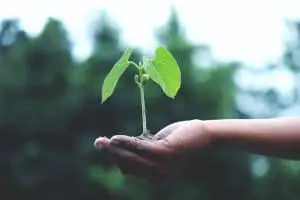Introduction
The fashion industry, until very recently has not been sustainable. Despite being the second most polluting industry in the world – second only to fossil fuels – it’s taken a very long time to clarify who is accountable for excess production and for incentivising excessive consumerism. There is a lot of finger-pointing in the industry, which makes it hard to promote change.
As a starting point, however, we can look at the creative professionals of this industry. Inspired designers should think about their fashion designs and map out of all the environmental consequences connected to their collection in terms of resources used, health hazards, labour and garment durability. As one can understand the environmental consequences of fashion production then, it is possible to act towards reducing them. As we’ll see in the next paragraph, this can be done by any player in the industry from the small independent designer to the large-scale enterprise.
In this post, we are going to discuss the following ideas:
- Mapping the environmental impact of your products
- Creating a different garment lifecycle helps your brand
- Use the power of the brand to influence consumers and change their behaviour
- Conclusions
1. Mapping the environmental impact of your products.
In order to implement sustainable strategies within fashion companies, we need to fully appreciate the environmental impact connected to a garment’s entire lifecycle. As consumers, we would usually be concerned with the use and disposal stage of a product’s life, but as manufacturers, we need to take into account all of the seven steps connected to a product’s life.
The product lifecycle can be easily confused with the PLC which is instead a management tool used by companies to plan their production and to sustain sales. These two concepts are different but related, considering that the PLC is a particularly appropriate framework to understand the business model of fast fashion companies.
As shown in the video above, a garment’s lifecycle can be broken down into six stages: to illustrate the point lwe can use as an example the process of creating a simple t-shirt made up of cotton and polyester.
Raw Material Extraction. In this stage, raw materials are harvested, whether they are natural fibres to produce cotton or crude oil to create synthetic materials. This stage in itself already provides a high environmental impact as the use of cotton implies the use of pesticides, whereas the extraction of oil causes high carbon emissions. In both cases, the extraction process creates a health hazard to both the local population and potentially, end users. To limit the impact of this stage firms can switch to recyclable polyester and organic cotton.
Material Processing. In this stage, cotton needs to picked apart, cleaned and dried. The fibre is then spun into yarns to create the cotton fabric. By comparison, the extracted crude oil is refined and converted into plastic pellets; pellets are then melted and then spun into polyester strands, which are then spun into yarn. The environmental cost of this stage is calculated in terms of energy, water and labour, and can be countered with bespoke initiatives and managerial strategies focused on using energy and water more efficiently.
Product Manufacturing. In this stage, fibres are turned into fabrics and fabrics into products. This stage can involve a variety of processing techniques such as knitting, weaving, dyeing, sewing and finishing. In this context, the cost of the production relates both to the environment and to the people involved in the manufacturing process. Domestic production, in general terms, better ensures that all health and labour regulations are respected and that companies can be held directly accountable for any violation.
Packaging and Transportation. Packaging should be addressed through firm policies and processes designed to reduce packaging overall. This stage relates to the distribution of the products through the retail chains of the company. Because of global supply chains, transportation can have both a high financial and environmental cost. On the other hand, those companies which produce locally can lighten their carbon footprint and also provide a better sense of social equity by creating manufacturing plants which are more environmentally sustainable.
Use. This stage is critical because this is where many designers can have a profound impact on the environment by working on two accounts: on the design of the garment and the quality of the materials. The use stage also relates to the habits and behaviour of end-customers. In this context, the water cost of a piece of clothing depends a lot on how often an end-user will wash it. Many sustainable fashion firms have tried to influence user behaviour by creating products which require minimal cleaning or the possibility of washing in cold water without using harsh detergents.
Disposal. Sustainable disposal can be achieved in mainly three ways, through recycle, buyback programs, repurposing and reconditioning.
Only by looking holistically at the lifecycle of a product it is possible to design a strategy capable of optimising its overall environmental impact.
2. Creating a different garment lifecycle helps your brand.
Sustainability becomes a tool for competitive advantage if we use it to reflect on how a product can be designed differently or by trying to create new pockets of value that constitute a point of differentiation from other brands.
Those companies who made choices towards sustainability practices usually incur in higher costs but at the same time these same firms able to grow their brand equity exponentially, by being on the fringe of sustainability.
Brands are stories, and the story of a sustainable brand is a persuasive one, capable of connecting a product to something more than an item. As a designer creates a sustainable collection, it builds on additional assets, a reason to buy and a connection to the customer.
The “reason to buy” relates to how a garment becomes a means to celebrate a heightened sense of consumer awareness, creating a profound connection to the buyer, as a series of profound human values are shared in the transaction. The material cost of the garment is to some extent high, but the value of ethical consumers is much higher. This dynamic is addressed by the pain-gain cost comparison in marketing pricing.
The “connection to the customer” instead describes how a customer grows an interest towards the brand that is not limited to what the brand sells, but it involves what the brand stands for. This phenomenon increases the brand’s elasticity and increases the breadth of its message.
As an expected result of this process, some ethical brands have become very expensive, de facto limiting their market and creating a stark disparity with the bargain-level prices of fast fashion retailers.
Fast fashion retailers, on the other hand, often use consumer behavioural dynamic in their favour. We can argue that the process of buying sustainable clothing is a rational decision based on scientific evidence, but low prices work around our logical decision-making process by tapping into our emotional subconscious. This is why at the moment of purchase even the most ethical consumers are put to the test with bargain-level pricing.
3. Use the power of the brand to influence consumers and change their behaviour.
By looking at the garment lifecycle, it’s possible to see how much of the sustainability impact of a fashion product relies on the behaviour of the end user. Once a company has developed an established authority and consistency in its communication then it can try to influence their consumer behaviour with targeted sustainability campaigns. This ultimately is the highest goal that can be pursued by a fashion brand as both ends of the business (businesses and consumers) co-create sustainable consumption.
A great example of this approach is endorsed by the brand Patagonia, who develop a wide range of programs to induce their customers to reduce, repair, reuse, recycle. Using the brand to influence behaviour, however, does not limit itself to fashion and clothing, Patagonia has been able to use its brand equity to tackle challenges which relate to wildlife and food, stretching its brand message to involve causes which involve fashion only collaterally.
Fashion is, in fact, a unique industry. By comprising professionals from an extensive list of backgrounds, the influence that fashion and luxury firms have on society cannot be underestimated.
4. Conclusions
As we’ve seen, it’s only by gaining a holistic view of the product lifecycle that we can understand how and where to act to lessen the environmental impact of clothing. Let’s never forget that fashion is a business and therefore both creative and managerial effort is necessary to maximise change.
In this post, we attempted at drawing a series of interconnections between apparently distant dimensions of the fashion world. As a result, we were able to understand, that just like in a natural ecosystem any decision we make has long-term consequences which may start from where we source materials, and may eventually influence our eating habits. If you’re interested in sustainability, please take a look below and see if there may be any additional resources from our blog, you may want to look into! Enjoy!
If you’re looking for an opportunity to deepen your understanding and knowledge of the practices of sustainable fashion, don’t hesitate to take a look at our course “The Sustainable Fashion Industry“. Our short and to-the-point, online class covers a wide range of topics spanning from sustainable business models to strategies to lower your carbon footprint. Here’s a link to the course, if you use the discount code BLOG20 at checkout you can access a 20% discount. Enjoy!







